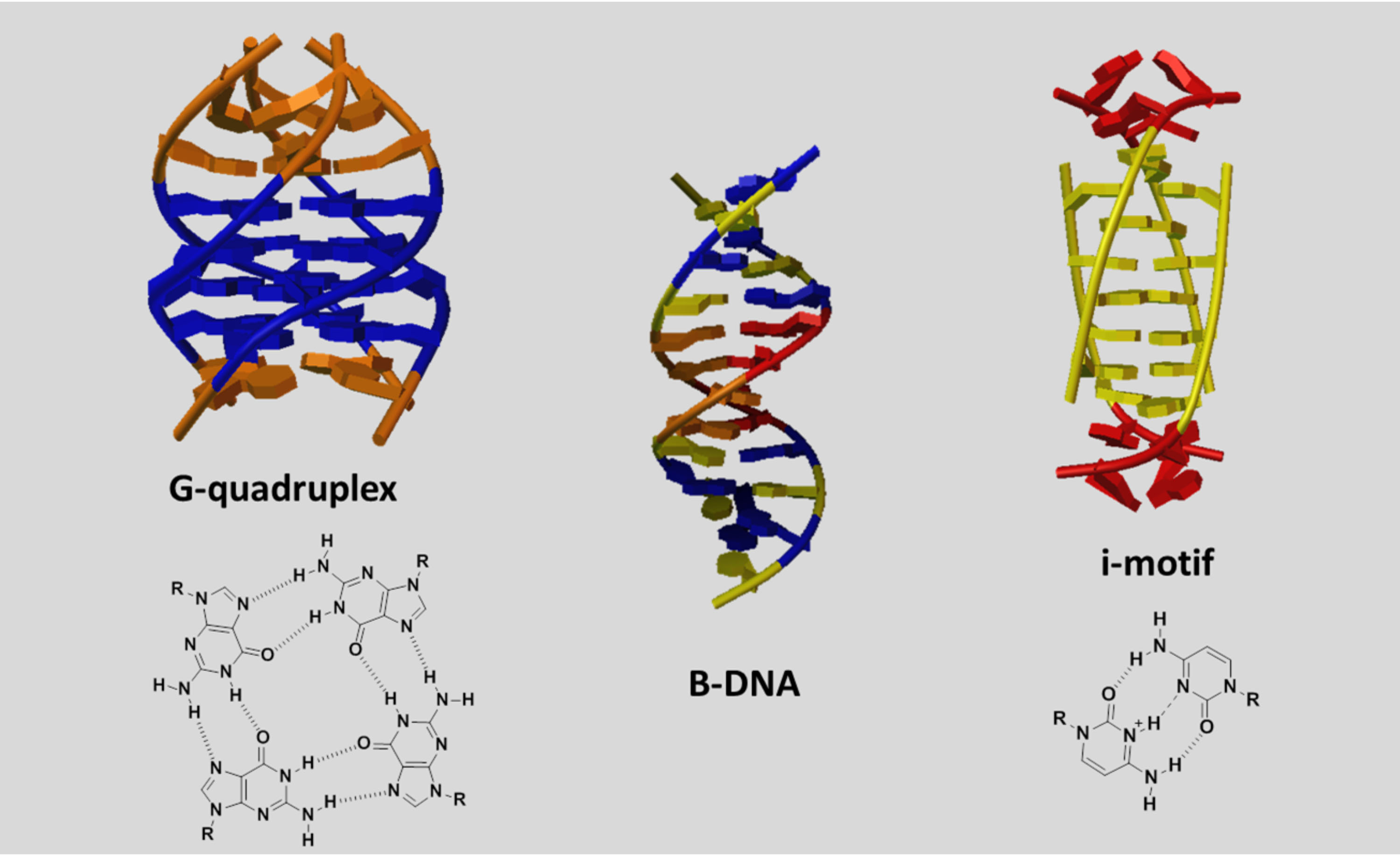
Directeur de recherche (DR1), INSERM
This e-mail address is being protected from spambots. You need JavaScript enabled to view it
Tel: +33(0)540003022
Bio
Jean-Louis Mergny graduated from Ecole Normale Supérieure de la rue d’Ulm (Paris) and got his PhD in Pharmacology (University Paris VI) in 1991 under the supervision of T. Garestier & M. Rougée (Triple-helices: spectroscopic studies). He went for a postdoctoral position in Basel, Switzerland with W. Gehring (Biozentrum). Afterwards he was hired by INSERM in 1993 in the Muséum National d’Histoire Naturelle, where he worked mainly on nucleic acids structures from a biophysical point of view. He was promoted Research Director in 2002. JL Mergny joined the IECB at the end of 2009 and became IECB director in Jan 2015.
Keywords / Expertise / Techniques
unusual nucleic acid structures, G-quadruplexes, drug-DNA interactions, telomeres and telomerase, thermodynamics, UV-absorbance, fluorescence and circular dichroism spectroscopies.
Summary
Nucleic acids are prone to structural polymorphism: in addition to the well-known double helix, a number of alternative structures may be formed. However, most non-canonical conformations are stable only under non-physiological conditions and have been considered as simple curiosities. Among these oddities, a family of nucleic acid secondary structures known as G-quadruplexes (G4) has emerged as more than a novelty. These structures can be formed by certain guanine-rich sequences and are stabilized by G-quartets. G-quadruplexes can be stable under physiological conditions and the evidence for quadruplex formation in vivo is now compelling. Our goals are to i) to apply these oddities to nanotechnologies and biotechnologies; ii) to understand their structures, rules of recognition and formation; iii) to conceive new biochemical, bioinformatics, and physico-chemical tools and finally iv) to apply G4-based strategies to various pathologies.
Activity report
Our objectives are to answer the following questions:
Where and when?
High-throughput sequencing methods and whole genome approaches are now being used to generate massive amounts of sequence data. Sometimes, statistical analyses point out the potential role of G-rich DNA or RNA motifs. However, the answer to the seemingly simple question “Is my sequence G4-prone?”, based on somewhat flawed or oversimplified search algorithms, is often inaccurate. For example, we previously demonstrated that stable quadruplexes may be formed by sequences that escape the consensus used for bioinformatics. We have built a new prediction algorithm (G4Hunter, recently published in Nucleic Acids Research) that we are experimentally testing first on DNA. We validated an experimental procedure to demonstrate G4 formation for a large set of sequences.
G-quadruplexes: Friends or foes?
Comparison of sequencing data with theoretical sequence distributions suggests that there is a selection against G-quadruplex prone sequences in the genome, probably as they pose real problems during replication or transcription and generate genomic instability (see below). Nevertheless, “G4-hot spots” have been found in certain regions of the genome: in telomeres, in repetitive sequences such as mini and microsatellite DNAs, in promoter regions, and in first exons of mRNAs. There might be a specific positive role for these sequences that compensates for the general selection against G4 forming sequences. Our goals are to understand the factors that modulate these effects. A number of proteins that interact with these unusual structures have been identified, including DNA binding proteins, helicases, and nucleases. We are currently developing a fluorescent-based assay to follow the activity of helicases in real time (Mendoza, Nucleic Acids Res. 2015).
G-quadruplex ligands: Treats or tricks?
One may achieve structure-specific rather than sequence-specific recognition of DNA. Because of their particular geometric configuration and electrostatic potential, G-quadruplexes may indeed specifically accommodate small artificial ligands, such as planar molecules, and an impressive number of candidates have been evaluated. Together with chemists we successfully identified a variety of G4 ligands and we wish to improve and functionalize these compounds, analyse their biological effects, and ultimately find new classes of anti-proliferative agents with anticancer properties.
Beyond Biology
Quadruplexes may well be biologically relevant, but they could also be used for various applications that are disconnected from cells. DNA is an attractive material for nanotechnologies because of its self-assembly properties. The ability of nucleic acids to self-assemble into a variety of nanostructures and nanomachines is being exploited by a growing number of researchers. Extremely sophisticated structures and nanodevices may be constructed with DNA. We believe that quadruplex structures offer interesting new possibilities and we have demonstrated that quadruplexes can be incorporated into nanodevices.

Selected publications
- Salgado GF, Cazenave C, Kerkour A, Mergny JL. G-quadruplex DNA and ligand interaction in living cells using NMR spectroscopy. Chemical Science 6 (6), 3314-3320.
- Mendoza O, Porrini M, Salgado GF, Gabelica V, Mergny JL. Orienting tetramolecular G-quadruplex formation: the quest for the elusive RNA antiparallel quadruplex. Chemistry. 2015 Apr 27;21(18):6732-9.
- Mendoza O, Gueddouda NM, Boulé JB, Bourdoncle A, Mergny JL. A fluorescence-based helicase assay: application to the screening of G-quadruplex ligands. Nucleic Acids Res. 2015 Jun 23;43(11):e71.
- MĂ©tifiot M, Amrane S, Mergny JL, Andreola ML. Anticancer molecule AS1411 exhibits low nanomolar antiviral activity against HIV-1. Biochimie. 2015 Nov;118:173-5.
- Lin S, He B, Yang C, Leung CH, Mergny JL, Ma DL. Luminescence switch-on assay of interferon-gamma using a G-quadruplex-selective iridium(III) complex. Chem Commun (Camb). 2015 Nov 18;51(89):16033-6
- Noer SL, Preus S, Gudnason D, Aznauryan M, Mergny JL, Birkedal V. Folding dynamics and conformational heterogeneity of human telomeric G-quadruplex structures in Na+ solutions by single molecule FRET microscopy. Nucleic Acids Res. 2016 Jan 8;44(1):464-71
- De Rache A, Mergny JL. Assessment of selectivity of G-quadruplex ligands via an optimised FRET melting assay. Biochimie. 2015 Aug;115:194-202
Research team
- Dr. Jean-Louis MERGNY Team leader
- Dr. Anne BOURDONCLE Teaching Assistant (MdC, Université de Poitiers)
- Dr. Gilmar SALGADO Teaching Assistant (MdC, Université Bordeaux)
- Dr. Samir AMRANE Chargé de Recherche (CR2, Inserm)
- Dr. Carmelo Di Primo Chargé de Recherche (CR1, Inserm)
- Aurore GUÉDIN Technician Assistant (A.I., INSERM)
- Amina BEDRAT PhD Student (Université de Bordeaux)
- Nassima GUEDDOUDA PhD Student (Université de Bordeaux)
- William PALAU PhD Student (Université de Bordeaux)
- Adrien BOUSSEBAYLE M2 Student (Université de Bordeaux)
- Stefaniia IVASHCHENKO M2 Student (Université de Bordeaux)
- Dr. Eric LARGY Postdoctoral Fellow (ANR)
- Dr. Oscar MENDOZA Postdoctoral Fellow (Fondation ARC)
- Dr. Souheila AMOR Postdoctoral Fellow (Fondation ARC)
- Dr. Vasantha KUMAR Postdoctoral Fellow (ANR)
- Dr. Aurore DE RACHE Postdoctoral Fellow (ANR)
- Marion PETITET Tech. Assistant (Inserm/Aquitaine Region)
- Pr. Liliya YATSUNYK Visiting Professor (Swarthmore College, PA, USA)
- Caitlin MIRON Visiting PhD Student (Queens University, Canada)
This team is part of the unit “ARN: Regulation Naturelle et Artificielle” (ARNA), INSERM U869 (now U1212 since Jan 2016).
|